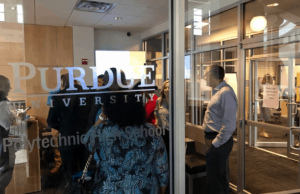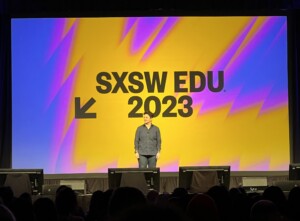No, You’re Not Doing Blended Learning

By Kevin Dellicker
When our consulting team approaches educators about a new blended learning implementation, we typically hear three reasons for why they won’t engage: blended learning costs too much, teachers won’t like it, and we’re already doing it.
Usually concerns about cost and teacher acceptance can be addressed with a little time and some patient engagement. However, when educators truly believe their school already is on the leading edge when they actually are not, getting the opportunity to have a substantive discussion can be very difficult.
Our consultants have developed some effective strategies for helping to overcome this important barrier while working with dozens of schools over the past few years. We learned most of these lessons the hard way, through trial and error. Hopefully, our experience can help other implementers find creative and disarming ways to say, “No, you’re not doing blended learning.”
Dellicker Strategies helps schools adopt innovative technologies and teaching methods to personalize learning and motivate students. Currently we oversee 15 station-rotation blended learning implementations in Pennsylvania, and are preparing 35 more for 2013. All of these schools are part of the Pennsylvania Hybrid Learning Initiative (PA HLI), a new statewide effort to promote, plan and implement the most promising blended models for student-centric education in mainstream schools.
For many years, Pennsylvania has been a leader in digital learning due to a series of unique and significant educational technology policies since the late 1990s. The “Link-to-Learn” and “Classrooms for the Future” programs provided more than $200 million to schools for computers, professional development and applications. The “E-Fund” provided another $60 million for schools to upgrade their broadband infrastructure. Changes to the funding formula encouraged the proliferation of cyber charter schools in Pennsylvania at a larger scale and faster rate than most other places.
As a result, most Pennsylvania schools have become rather tech-savvy at implementing tools to help teachers deliver traditional instruction more effectively. However, this does not mean that these same schools all have become proficient at blended learning, which offers the promise of changing the entire model of instruction. From experience, sometimes it is harder to convince a person with a strong technology background to implement something new than to persuade a digital novice to try blended learning.
Making the Case for Blended Learning
So, how can consultants and thought leaders convince educators to decide for themselves that blended learning offers something more? We’ve learned that a combination of quality professional development, inter-district collaboration and effective public communications are prerequisites to having the substantive conversations required to convince a skeptical school that blended learning is different. A subsequent comprehensive blended learning pre-assessment is essential to helping that school conclude on its own that blended learning is important.
Preparing With a Three-Fold Strategy
Our blended learning implementations are supported by three specialty teams that provide input and deliverables to each step in the planning process: the Learning Team, Communications Team and Collaboration Team.
The Learning Team supports formal and information educational opportunities that prepare interested schools for blended learning programs. We think that blended learning is too broad a term and too complex a subject to expect that educators will understand its transformational features and benefits with a few hours of discussion. Instead, the Learning Team prepares a series of modular professional development classes delivered over several sessions to help teachers and administrators understand the concepts, models and planning process required to succeed.
The Communications Team helps define key terms and explain different types of blended learning. Where possible use research from national organizations like the Innosight Institute, which classifies blended learning into different categories. Effective communication ensures a common vocabulary in a field that doesn’t really have one yet, and helps our team avoid “talking past” potential clients.
The Collaborative Team emphasizes that educators experimenting with new blended learning models do not need to figure everything out by themselves. Dellicker Strategies operates a private social networking site for all of its blended learning customers for accessing documents, sharing best practices and getting to know each other in a virtual environment. We also host face-to-face sessions that bring together representatives from multiple school districts, including those already implementing blended learning. Educators are much less likely to falsely believe they already are implementing blended learning if surrounded by peers who actually are, and are speaking about it.
This effort involving learning, communicating and collaborating about blended learning is time-consuming and resource-intensive. We call this the “Prepare” phase of the blended learning operations cycle. We’ve found it necessary to go through this process up-front with schools before even starting to plan. For most schools, this process is a reality check that helps them conclude for themselves that they really are not implementing blended learning. If they still are not convinced, usually the assessment phase finishes the job.
Evaluating Blended Learning Readiness
After completing Prepare phase activities, schools undergo a blended learning readiness assessment. Essentially, it is a gap analysis that quantifies the difference between the current school environment and the desired future state of a blended school. This endeavor involves a site visit by a team of blended learning experts and presents a comprehensive analysis of school infrastructure, operations and environment.
The readiness assessment almost always has the same effect. After reviewing the data, educators conclude that no, we really aren’t doing blended learning—but, we’d like to try. Only at this point can our team confidently conclude that the school is committed to the complexities and cultural changes required to implement a true blended school.
Implementing Starts With Culture
We believe that the implementation process – at least from a cultural standpoint – moves much more smoothly because our approach is tailored to each school’s culture and individual goals. Instead of objecting, the teachers in our pilot program districts are embracing blended learning and collaborating with their peers across the state; and parents who were initially unsure of how blended learning would work for their children are singing the praises of the process to their friends and family online and on social media channels.
As our pilot schools start implementation around the state, we are especially excited to see the real-time evaluation and feedback roll in to teachers and parents. All of our pilot schools are sharing information with each other via a members-only social media portal, in order to improve the program as it progresses throughout the year. Also central to the process is a rigorous evaluation process that tracks monthly progress towards 16 different program objectives. This allows schools to make improvements as they progress and builds a body of knowledge from among all participating schools.
Our pilot schools show that with foresight and planning, schools can take their digital learning to the next level and implement blended learning successfully to create a win-win-win: A win for the school district, its teachers, and the students and families they serve.
Kevin Dellicker is co-founder and Manager of Dellicker Strategies, LLC. Kevin helps educators develop effective new ways to use technology in schools. His team leads the PA Hybrid Learning Initiative (PA HLI), a statewide consortium of K-12 schools dedicated to advancing the use of innovative blended learning models in mainstream classrooms.
As the chief executive officer of the business, Kevin oversees a team of highly experienced and specialized consultants. He has overseen the successful launch of more than $140 million in new school broadband projects. His consultants have designed and implemented new blended learning solutions for dozens of schools.





0 Comments
Leave a Comment
Your email address will not be published. All fields are required.